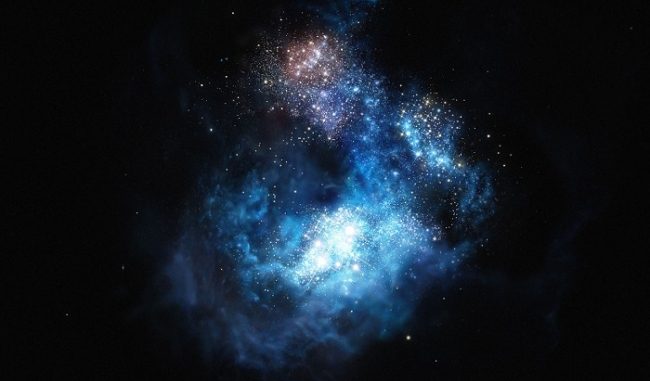
Astronomers at the European Southern Observatory (ESO), using the Very Large Telescope (VLT), have finally observed the first generation of stars that existed in the early universe.
They have been spotted in the CR7 galaxy, the brightest early galaxy ever discovered.
The newly found CR7 is three times brighter than any previously discovered galaxy.
It has been nicknamed after Cristiano Ronaldo (CR7), the universally recognised Portuguese football star.

BYPASS THE CENSORS
Sign up to get unfiltered news delivered straight to your inbox.
You can unsubscribe any time. By subscribing you agree to our Terms of Use
Latest Video
The stars within the galaxy are known as ‘Population III’ stars, and are made of primordial matter left behind after the Big Bang. They contain mostly hydrogen, helium and trace amounts of lithium. These stars gave birth to the first heavy elements in nature like oxygen, carbon and iron.
These allowed for the next generation of stars to be born, which contain every element found in nature and our bodies, and shaped the evolution of the universe and what is called life.
According to eso.org , Astronomers using ESO’s Very Large Telescope have discovered by far the brightest galaxy yet found in the early Universe and found strong evidence that examples of the first generation of stars lurk within it. These massive, brilliant, and previously purely theoretical objects were the creators of the first heavy elements in history — the elements necessary to forge the stars around us today, the planets that orbit them, and life as we know it. The newly found galaxy, labelled CR7, is three times brighter than the brightest distant galaxy known up to now.
Photo: Artist’s impression of CR7: the brightest galaxy in the early Universe.
Sky At Night Magazine reports:
The stars were found in a bright galaxy dating from approximately 800 million years after the Big Bang. What was really surprising to astronomers though was how bright it was. The galaxy is three times brighter in the ultraviolet than the previous title holder, Himiko. However the real discovery was only revealed after astronomers took a closer look at CR7.
“By unveiling the nature of CR7 piece by piece, we understood that not only had we found by far the most luminous distant galaxy, but also started to realise that it had every single characteristic expected of Population III stars. It doesn’t really get any more exciting than this,” says David Sobral from the Institute of Astrophysics and Space Sciences, the Faculty of Sciences of the University of Lisbon in Portugal, and Leiden Observatory in the Netherlands.
Population III stars were extremely large, up to a thousand times more massive than our Sun, and much larger than stars can get in the current Universe. They burned hot, converting their hydrogen and helium inside them into heavier elements. However they were so large that they ended up going supernova after only two million years, creating a nebula that the next generation of stars would grow from and seeding it with these heavy elements. Ultimately this would go onto allowing planets to form and life to evolve.
“I have always wondered where we come from,” says Jorryt Matthee, a PhD student from Leiden University. “Even as a child I wanted to know where the elements come from: the calcium in my bones, the carbon in my muscles, the iron in my blood. I found out that these were first formed at the very beginning of the Universe, by the first generation of stars. With this discovery, remarkably, we are starting to actually see such objects for the first time.”


